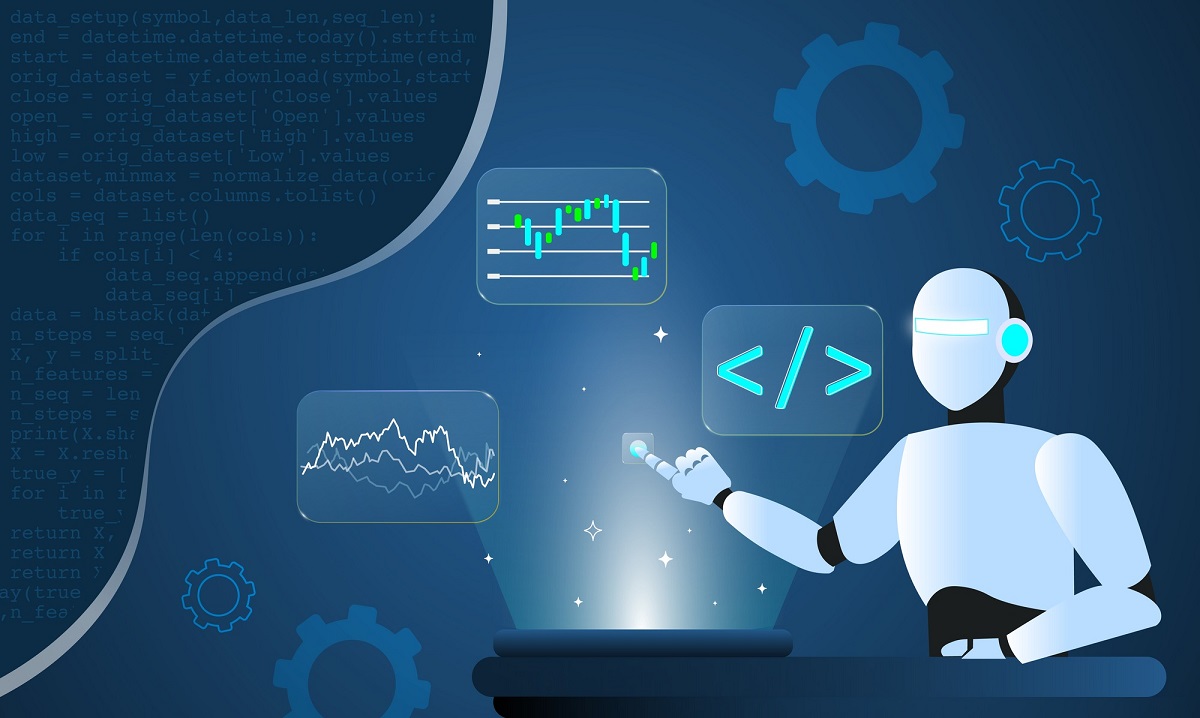What is a trading bot

In the fast-paced world of finance and investment, technology is continuously pushing the boundaries of what’s possible. One such innovation that has made waves in recent years is the trading bot. In this article, we’ll dive deep into the world of trading bots, exploring what they are, how they work, and their impact on the financial markets.
Understanding Trading Bots
| Common Types of Trading Bots | Description | Key Features |
| Arbitrage Bots | Exploit price discrepancies between exchanges by buying low and selling high. | – Fast execution – Monitor multiple exchanges simultaneously – Capitalize on price differentials |
| Trend-Following Bots | Identify and follow market trends, buying when prices are rising and selling when they start to decline. | – Analyze historical data – Use technical indicators – Automate buy and sell decisions |
| Market-Making Bots | Provide liquidity to the market by continuously placing buy and sell orders. | – Maintain bid-ask spreads – Reduce price volatility – Profit from small price movements |
| Scalping Bots | Aim to make small profits from rapid price movements by executing numerous small trades. | – Execute high-frequency trades – Target short-term price fluctuations – Minimize holding periods |
The Basics of Trading Bots
Trading bots, short for trading robots, are computer programs designed to execute trading strategies automatically on behalf of traders. These bots use a set of predefined rules and algorithms to analyze market data and execute trades without human intervention.
Types of Trading Bots
There are various types of trading bots, each catering to specific trading strategies:
- Arbitrage Bots: These bots exploit price discrepancies between different exchanges, buying low and selling high to make a profit.
- Trend-Following Bots: They identify and follow market trends, buying when prices are rising and selling when they start to decline.
- Market-Making Bots: These bots provide liquidity to the market by continuously placing buy and sell orders.
- Scalping Bots: Scalpers aim to make small profits from rapid price movements by executing numerous small trades.
How Trading Bots Work
Trading bots rely on complex algorithms to make trading decisions. They analyze historical price data, market trends, and various indicators to determine when to buy or sell assets. Once a bot identifies a trading opportunity, it can execute trades in a fraction of a second, much faster than a human trader.
Advantages of Using Trading Bots
1. Speed and Efficiency
One of the most significant advantages of trading bots is their remarkable speed and efficiency in executing trades. Unlike human traders who might take time to analyze market data and make decisions, trading bots operate with lightning-fast precision. They can react to market changes in real-time, ensuring that traders don’t miss out on profitable opportunities.
Trading bots are designed to process vast amounts of data in a fraction of a second. They can instantly analyze market conditions, identify potential trades, and execute orders accordingly. This speed is crucial in markets where prices can change rapidly. Traders using bots can capitalize on price fluctuations and make split-second decisions that would be impossible for a human to match.
Additionally, trading bots can execute multiple trades simultaneously across different assets or markets. This multitasking ability further enhances their efficiency, allowing traders to diversify their portfolios and manage various strategies simultaneously.
In summary, the speed and efficiency of trading bots make them indispensable tools for traders seeking to stay ahead in fast-paced financial markets.
2. Eliminating Emotions
Another significant advantage of trading bots is their ability to eliminate emotions from the trading process. Emotions, such as fear and greed, often cloud a trader’s judgment, leading to impulsive decisions that may result in losses. Trading bots, on the other hand, operate solely based on algorithms and predefined rules.
Human traders can become emotionally attached to their investments, making it challenging to cut losses or take profits at the right time. They may hold onto losing positions, hoping they will recover, or panic-sell during market downturns. In contrast, trading bots follow their programmed strategies without being influenced by emotional factors.
This emotionless approach helps traders maintain discipline and stick to their predefined trading plans. It reduces the chances of making irrational decisions driven by sentiments rather than sound analysis. By eliminating emotions, trading bots contribute to more consistent and rational trading outcomes.
In essence, trading bots serve as a reliable and unemotional trading partner, ensuring that trading decisions are based on logic and data rather than fleeting emotions.
3. 24/7 Availability
Trading bots offer the unique advantage of 24/7 availability. They can operate around the clock, allowing traders to take advantage of global markets regardless of their time zone or personal schedule.
Traditional human traders face limitations due to the need for sleep, work, or other commitments. They may miss out on opportunities that arise during non-trading hours or in different parts of the world. However, trading bots are not bound by these constraints.
Whether it’s the middle of the night or a weekend, trading bots can actively monitor and execute trades. This continuous operation ensures that traders don’t miss profitable opportunities that occur outside regular trading hours. It’s particularly beneficial in the cryptocurrency market, which operates 24/7, and where price movements can be significant during off-hours.
In conclusion, the 24/7 availability of trading bots empowers traders to participate in global markets at any time, providing flexibility and efficiency that traditional trading methods cannot match.
Risks and Challenges
1. Technical Issues
Trading bots, while powerful tools, are not immune to technical issues. These glitches can have serious consequences if not managed properly. Here are some key points to consider:
- Software Bugs: Like any computer program, trading bots can have software bugs that may lead to unexpected behavior. These bugs can result in erroneous trades, incorrect calculations, or system crashes.
- Connectivity Problems: Trading bots rely on internet connectivity to access market data and execute trades. Network outages or slow connections can disrupt their operation, potentially causing missed opportunities or losses.
- Data Feeds: Bots depend on accurate and timely market data. If the data feed they rely on is delayed or erroneous, it can lead to incorrect trading decisions.
- Security Concerns: Trading bots need to be secure to protect against cyber threats. If not adequately protected, bots can be vulnerable to hacking, leading to unauthorized access and potential losses.
To mitigate these technical issues, traders must regularly update and maintain their trading bot’s software, ensure a stable internet connection, use reliable data sources, and employ robust security measures.
2. Market Volatility
Sudden market fluctuations can catch trading bots off guard, potentially resulting in unexpected losses. Here’s a closer look at this challenge:
- Rapid Price Swings: Markets can experience rapid and extreme price swings due to various factors, including economic news, geopolitical events, or unexpected announcements. These volatile moments can trigger trading bot actions that may not align with the current market conditions.
- Liquidity Issues: During periods of extreme volatility, liquidity can dry up in certain markets. This can lead to wider bid-ask spreads and slippage, impacting a bot’s ability to execute trades at desired prices.
- Flash Crashes: In rare cases, flash crashes can occur, causing assets to plummet in value within seconds. Trading bots may struggle to react appropriately in such situations, potentially exacerbating losses.
To address market volatility, traders often implement risk management strategies, such as setting stop-loss orders, adjusting trading parameters, or temporarily disabling their bots during particularly turbulent market periods.
3. Over-Optimization
Over-optimizing a trading bot’s strategy based on past data can lead to poor performance in real-market conditions. Here’s why this is a concern:
- Curve Fitting: Traders may fine-tune their bot’s strategy to fit historical data perfectly. However, this curve fitting can result in a strategy that is too specific to past conditions and fails to adapt to changing market dynamics.
- Data Snooping: Constantly adjusting a bot’s parameters based on historical data can lead to data snooping bias. Traders may unintentionally develop strategies that are optimized for past events but ineffective in predicting future market movements.
- Failure to Generalize: An over-optimized bot may struggle to generalize its strategy to new market conditions, leading to losses when faced with scenarios not encountered in historical data.
To avoid over-optimization, traders should use a balance of historical data and forward testing, periodically review and update their bot’s parameters, and avoid excessive parameter tuning based on past performance alone.
In summary, while trading bots offer many advantages, traders must be aware of potential technical issues, market volatility, and the dangers of over-optimization to use them effectively and manage risks.
In conclusion, trading bots have revolutionized the world of trading by providing speed, efficiency, and emotion-free trading. However, they are not without risks and challenges. Traders must use them wisely and continuously monitor their performance to mitigate potential issues.
Frequently Asked Questions
1. Are trading bots suitable for beginners?
Trading bots can be used by beginners, but it’s essential to have a good understanding of trading strategies and risk management before relying on them.
2. Do I need coding skills to use trading bots?
While some trading bots require coding skills for customization, many user-friendly options are available that do not require programming knowledge.
3. Can trading bots guarantee profits?
No, trading bots cannot guarantee profits. They operate based on predefined rules and market conditions, and there are always risks involved in trading.
4. How can I choose the right trading bot for my needs?
To choose the right trading bot, consider your trading goals, risk tolerance, and the specific assets you want to trade. Research and test different bots before making a decision.
5. Are trading bots legal?
The legality of trading bots varies by jurisdiction. It’s crucial to research and comply with local regulations when using them for trading.
